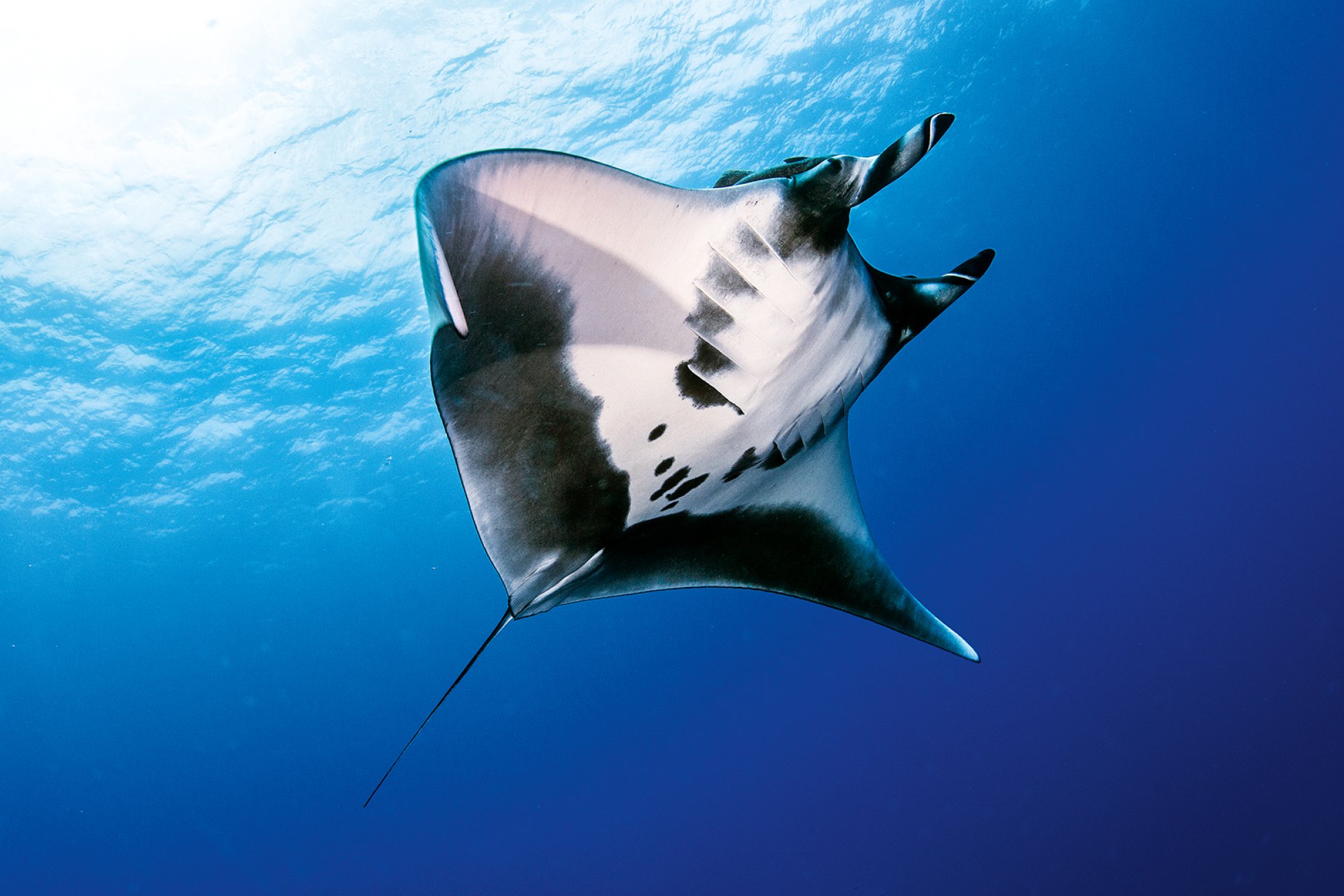Diving with Giant oceanic manta rays
Blankets in Flight
With fins as wide as wings, manta rays soar along ocean currents like birds in flight, making them one of the most elegant animals of the sea. The name ‘manta’ comes from the Spanish word blanket and with a wingspan of up to nine meters, it’s easy to see how they can look like a blanket floating in the sea. Scuba diving with mantas is one of the most amazing experiences any diver can have underwater.
Giant oceanic manta rays are among the few, unique fish species that can jump completely out of the water. They have been seen jumping up to 2 meters from the water’s surface, most likely to rid parasites from their bodies, as scientists believe. Besides being good jumpers, they are also good communicators, communicating with other manta rays through noises they create with their “wings.” Although they are mostly plankton eaters, these animals have nearly 1,400 tiny teeth. Because they feed on plankton, they are best encountered in nutrient-rich waters which usually have reduced visibility. Experience this extraordinary spectacle by diving with giant manta rays as they feed. Click here to plan your next trip to sites where you can dive with Giant oceanic manta rays.
Dive Sites with this Animal View more on map

★★★★★ Kottefaru Thila
Great thila with many small overhangs that often serve as shelter for rays, nurse sharks and turtles. Soft corals and extremely many anemones !! Due to its location in a canal, a current must always be expected. We, therefore, recommend having experience with currents or a * special * dive.

★★★★★ Sola Corner
From November / December to the beginning of May one of the best manta spots in the Maldives! Also suitable for beginners! But not only mantas are sighted here. Lots of pelagic delicacies can be discovered with a bit of luck. Can have a stronger current, but easy to dive.

★★★★☆ Lankan Beyru
Lankan is a cleaning station for manta rays and scuba divers visiting often get to see an amazing manta show, one of the highlights of any trip to the Maldives.

★★★★★ Bat Island: Big Scare, Gran Susto
Bat Islands are considered one of the best bull shark dive sites (Apr - Nov). But only advanced certified divers are allowed due to the depths. “The Big Scare“ is most famous for the chances of seeing the Bull sharks, although during the dive we can also encounter different types of rays including oceanic mantas.

★★★★☆ Catalinas Island, Clásico
11 km west of Potrero and Flamingo is the famous site of Clasico. This dive is done on the western side of the islands, from the south towards the north. There are successive ripraps. Several ways to dive possible, depending on certification level. From 10m to more than 30m.

★★★★★ Mawan Komodo
Mawan is a small island with white sand beaches and turquoise waters in central Komodo National Park. It holds many surprises for divers, offering huge inhabitants as well as a great macro marine life. Mawan is also a cleaning station for mantas. Divers and snorkelers alike can enjoy seeing them.
